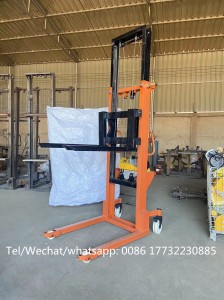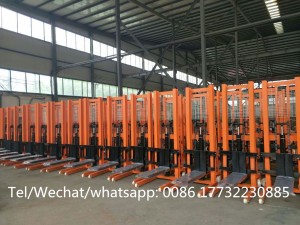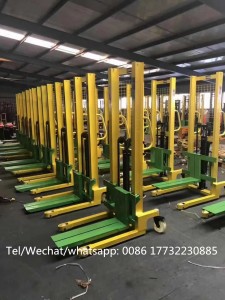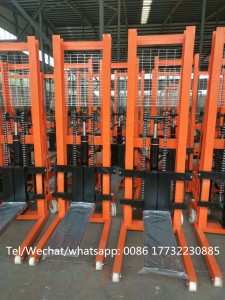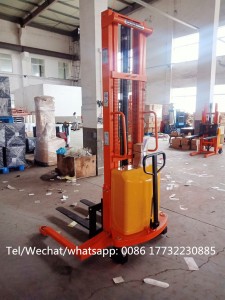The lifting capacity of stacker forklifts can vary depending on the specific model and design. Generally, stacker forklifts have lower lifting capacities compared to larger forklifts. Here are some common ranges:
Light-duty stackers: These stackers are designed for lighter loads and typically have a lifting capacity ranging from around 500 kilograms (1,100 pounds) up to 1,500 kilograms (3,300 pounds). They are suitable for applications where smaller loads need to be lifted and stacked.
Medium-duty stackers: These stackers have a higher lifting capacity compared to light-duty stackers. The lifting capacity for medium-duty stackers can range from approximately 1,500 kilograms (3,300 pounds) up to 2,500 kilograms (5,500 pounds). They are capable of handling heavier loads while still maintaining maneuverability in narrow spaces.
Heavy-duty stackers: These stackers are designed for lifting and stacking heavier loads. They typically have a lifting capacity ranging from around 2,500 kilograms (5,500 pounds) up to 4,000 kilograms (8,800 pounds) or more. Heavy-duty stackers are often employed in industrial settings where larger and heavier loads need to be handled.
It’s important to note that these are general guidelines, and the actual lifting capacity of a stacker forklift will depend on factors such as the specific model, load distribution, and center of gravity of the load being lifted. It is crucial to consult the manufacturer’s specifications and guidelines to ensure that the stacker is being used within its recommended lifting capacity.
Additionally, it’s important to consider the load height requirements as stacker forklifts typically have lower lift heights compared to traditional forklifts. Exceeding the lifting capacity or lifting beyond the specified height can compromise the safety and stability of the stacker.
Post time: Oct-16-2023





